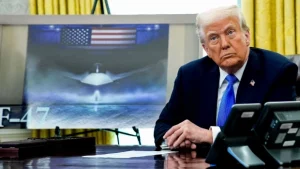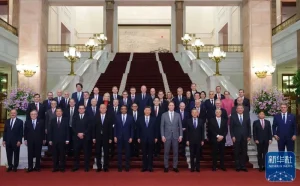Beijing Moves Drills Closer to Taiwan: Key Official Statements to Watch
Beijing started another series of joint military and coastguard drills around Taiwan on Tuesday. How did China’s military and military commentators discuss this exercise around Tuesday? We have summarized their comments.
According to a statement issued by the PLA’s Eastern Theatre Command, the patrols and exercises included simulated air and land strikes, as well as control of key passages to test the joint combat readiness of its troops.
According to Shi, army, navy, air, and rocket forces have been deployed for the multidirectional naval and aerial maneuvers.
The drill is focused on combat readiness patrols, seizing comprehensive control, striking maritime and land targets, imposing blockades on key areas and routes, and aiming to test the joint operational capabilities of the theatre’s forces, he said.
The East China Sea branch of the Chinese mainland coastguard said on Tuesday that it had multiple vessel formations conducting law enforcement patrols in the waters around Taiwan.
Coastguard spokesman Zhu Anqing said in the statement that the vessels were carrying out boarding and inspection, interception, and seizure drills.
According to an image shared by CCTV, six coastguard vessel formations surrounded the island, with three of them positioned on the eastern side – an increase on the Joint Sword-2024B operation of October 2024, when four formations were deployed.
Yuyuan Tantian, a social media account affiliated with CCTV, said the coastguard patrols were closer to Taiwan compared with the operation conducted during the drills in October.
“From [the Joint Sword drills] in May and October last year to today’s operation, the deployment of the coastguard force can be said to be advancing step by step, which just proves that ‘the greater the provocation, the tighter the control’,” it said.
Mainland-based military analyst Fu Qianshao said the aim of the PLA drill was to “reduce the island’s reaction time and space”.
By deploying a significant number of naval vessels, including the Shandong, to Taiwan’s eastern waters, the mainland forces would also be better positioned to respond to potential interference from other countries, he noted.
“This time, we have dispatched an aircraft carrier to Taiwan’s east, which should be considered a routine deterrence measure because external forces attempting to interfere in Taiwan Strait affairs would inevitably approach from the eastern waters.”
Fu said that China would have to take countermeasures to ensure security if forces from other countries attempted to conduct air and underwater surveillance, such as with tracking strategic bombers and submarines.
Song Zhongping, another mainland military analyst, said the Shandong’s deployment was intended to prove that the so-called Taiwanese response area did not exist. “Taiwan is part of China, there is no so-called response area. The PLA responded with facts.”
In an interview with CCTV on Tuesday, a professor from the National Defence University Zhang Chi noted that the current exercise did not have a code name, unlike previous drills.
“This largely indicates that the type of drills we are witnessing today have already become the new normal. For the PLA and the Eastern Theatre Command, such exercises are now a routine operation,” Zhang said.
Editor: Zhongxiaowen



